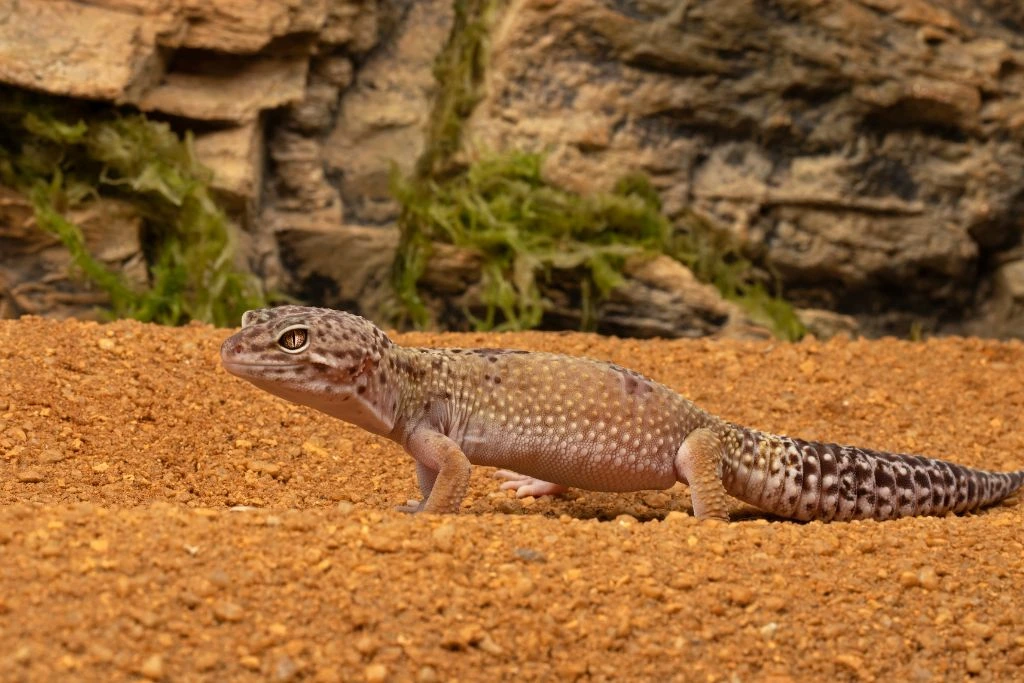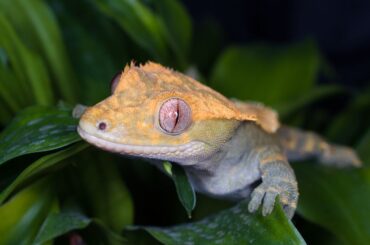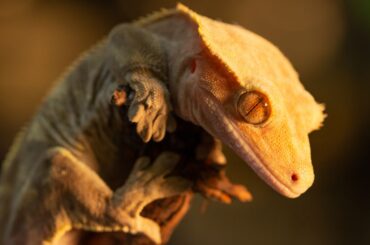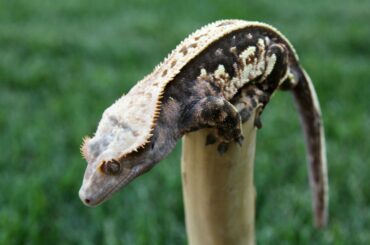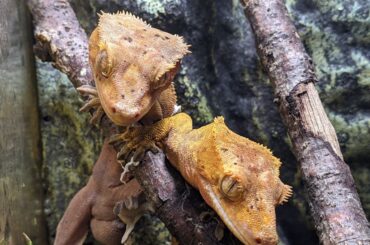Both children and adults like keeping leopard geckos as pets. They are little, silent, colorful, and simple to handle, but they need the right surroundings to survive, just like other reptiles.
A leopard gecko’s health and general happiness in your care depend on having a correctly constructed enclosure. Especially for new reptile keepers, establishing a leopard gecko environment can be complicated because of the need for the right lighting, temperature, humidity, and decorations.
A leopard gecko’s tank layout should closely resemble the animal’s natural environment. The first thing to remember is that leopard geckos are native to Asia and can be found in Pakistan, Afghanistan, Western India, Iraq, and Iran. These regions all share a characteristic–they are all hot, bright places that resemble deserts.
Look through this guide for leopard gecko tank setup ideas if you need help setting up your leopard gecko’s environment!
Leopard Gecko Tank Setup
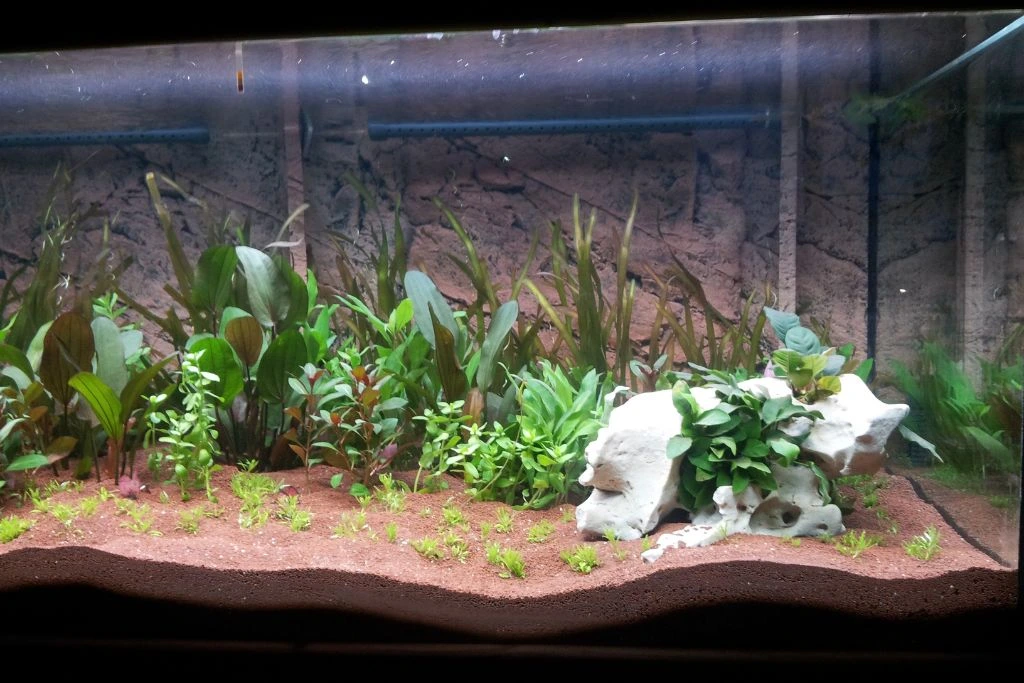
Due to their resilient and adaptable nature, leopard geckos thrive in various enclosures and tank types. They are used to surviving in various difficult environments, including cracks between railroad ties and holes on the banks of arid riverbeds.
When selecting a tank, there are many options available. There are differences in the materials, size, ventilation, and insulation between tanks.
Fortunately, selecting the ideal tank for such a leopard gecko is simple. Leopard geckos don’t have a particular preference for their habitat. Despite this, a few factors still distinguish some tanks from others.
Vivarium
Your gecko can live in a vivarium that is approximately 86 x 37.5 x 42 cm in size. To keep your gecko inside, and any potential predators (like cats) outside, and give your gecko access to enough fresh air and lighting conditions, ensure your tank has a screen lid.
Heat Mat
Using a heat mat for reptile tanks can help you regulate the ground temperature within the vivarium. These can be purchased online or at any pet store.
Basking Lamp
Your leopard gecko must receive the proper kind and amount of light throughout the day. To do this, utilize a basking lamp since the environment must resemble your gecko’s native habitat.
UV Lamp
Make sure to include a UV gradient. With the aid of a solar meter, the gradient can be determined to be Ferguson zone 1 with a UV index range of 0 to 0.7.
Infrared Heat Lamp
Using an infrared heat lamp, you can keep the air temperature stable at night.
Hygrometer
The humidity in the tank can be measured using a hygrometer. If it is too high, consider using a smaller water bowl and boosting airflow through the tank; if it is too low, use a larger water dish or raise the level of wet moss in the tank.
Thermometer
Within your leopard gecko’s vivarium, there must be a temperature gradient, with one side of the tank maintained warmer than the other. Monitor its vivarium temperature with a thermometer on both sides.
Paper Towels
A reasonable and simple choice that is especially suggested for juvenile geckos is paper towels. They may be shredded and need to be changed frequently, but they do not endanger your gecko’s health.
Reptile Sand Mat
Since all the “sand” particles are attached to the mat like gentle sandpaper, there is no chance of impaction. However, this texture could make cleaning difficult.
Slate Tile
Tile made of slate is simple to remove, clean, and is excellent at retaining heat. They are also better looking than paper towels.
Leopard Gecko Tank Setup 1: Hideouts
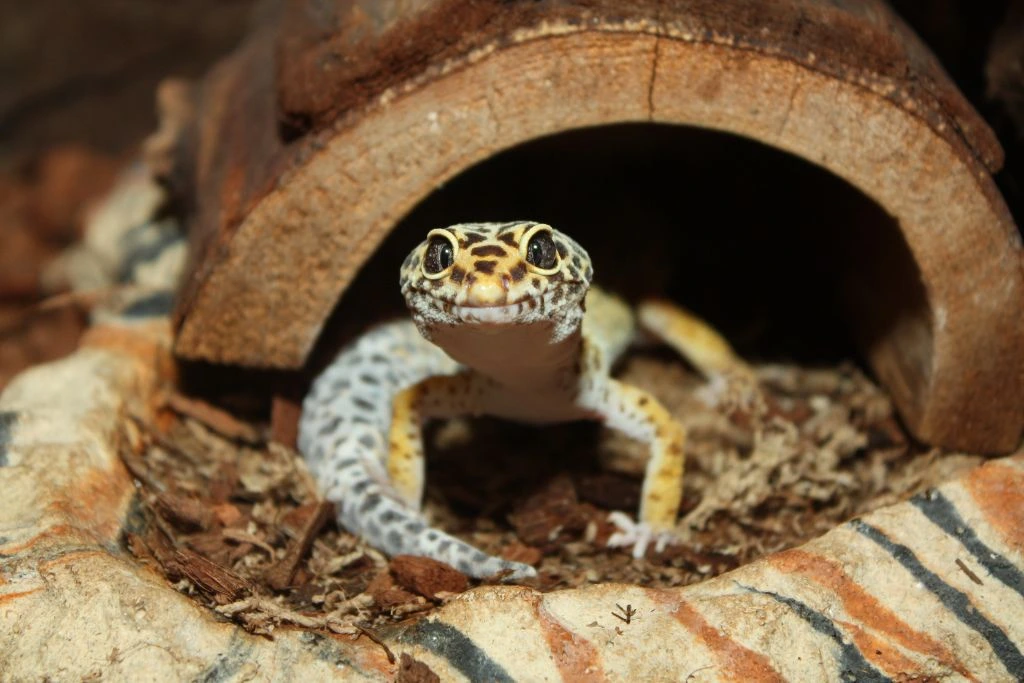
A leopard gecko necessitates a large number of hiding places throughout its habitat so that it can hide there throughout the daytime to feel comfortable and secure. These hideouts can range from being as straightforward as Tupperware containers to as intricate as a real timber log or rock cave.
They also require a moist hideout to aid in shedding and hydration, in addition to basic hideouts. Three hideouts are a minimum requirement for a leopard gecko’s tank. One should go on the warm side, one on the cold side, and one in the middle. Your leopard gecko may thermoregulate by basking in a warmer or cooler environment thanks to its three hideouts.
Even while three hideouts are the minimum, adding more will give them a sense of security and more room to roam. Aim to disperse between four and five hideouts around the tank.
Warm Hideout
Most of the day will be spent in this hideout by your gecko. Put this immediately over the substrate that is covered in a heat mat.
Moist Hideout
Wet moss, paper towels, or EcoEarth should be used to maintain the moisture of this crucial hideout. When it comes time to shed skin, your gecko will look for a wet spot. Therefore, the middle or chilly side of the enclosure would work well because the water won’t evaporate as rapidly.
Optional Hideout
Adding a second hideout to the cage is not required, but it is preferred because it allows your gecko more alternatives for controlling its temperature and selecting the right environment.
Leopard Gecko Tank Setup 2: Plants
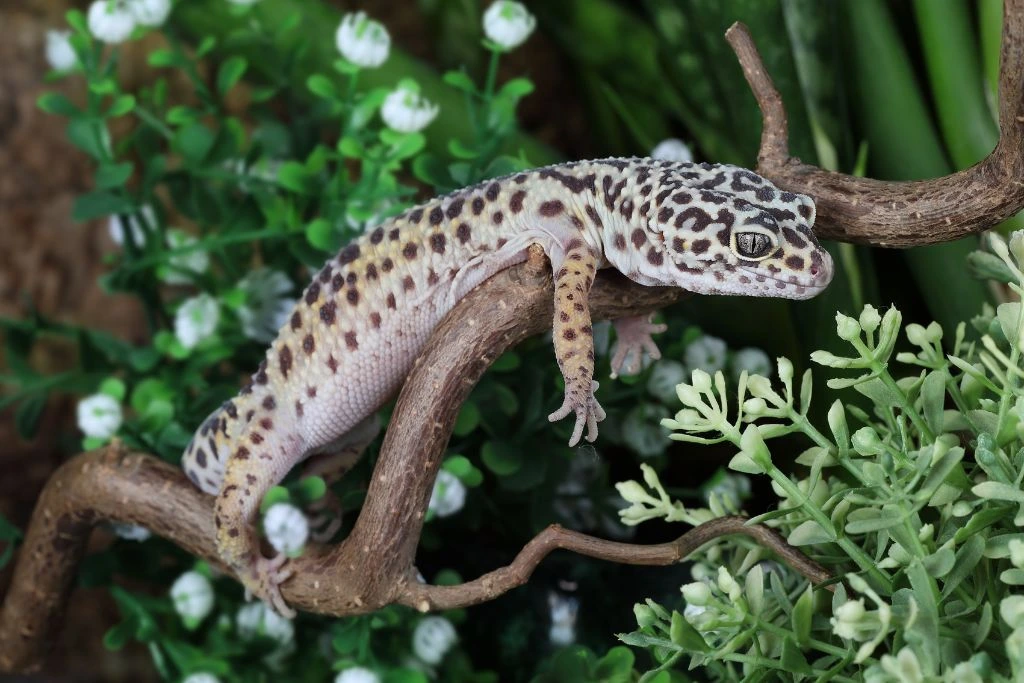
Numerous plants, rocky outcrops, bushes, and rocks are present in a leopard gecko’s native habitat to help them blend into its surroundings and give cover. They will feel more at ease and secure in their tank if decorated.
A fantastic enhancement to a leopard gecko’s habitat is live plants. They imitate their original habitat, release oxygen, control humidity, provide shade, and give off a native feel and look. The greatest plants can endure warm, dry conditions while remaining small.
Real Plants
Due to a lack of light and moisture, most genuine plants cannot grow in a leopard gecko habitat, unlike tropical vivaria. Air plants are one of the uncommon exceptions. These rootless, slightly-alien-appearing plants can be affixed to rocks or walls and require little upkeep. At least some light should be present, and misting should occur once or twice weekly.
Even if choosing a terrarium with less light would make it challenging, some advise succulents without spikes. Additionally, vulnerable to stagnant air are succulents. The risk of exposing intruders outweighs their affordability and ease of use. Your leopard geckos could get sick from worms, mites, or other microscopic invertebrates.
Artificial Plants
A lot of settings involve fake plants. Whether or not you want artificial plants for your terrarium is a personal choice. There are some quite lifelike fake plants available. When performing routine terrarium maintenance, give elaborate models a good wash because they can easily become dusty.
Appropriate plants include:
- Jade trees
- “Ole Vera”
- Pothos
- Holiday Cactus
- Prickly plants
- Sedges
- Animate stones
Leopard Gecko Tank Setup 3: Substrates
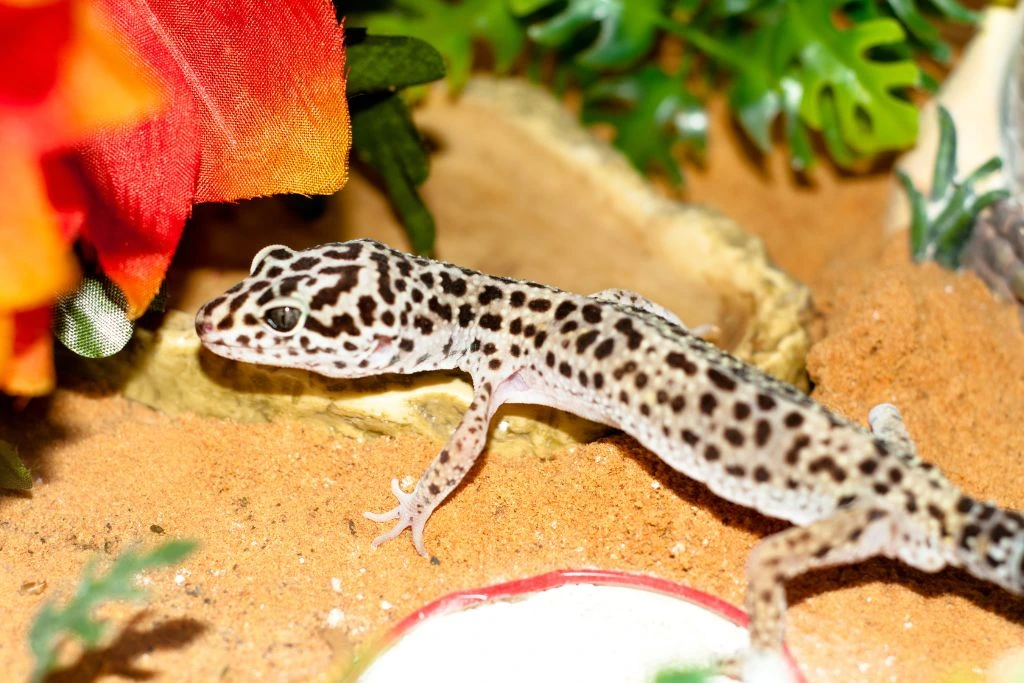
For leopard gecko substrates, there are some nice and not-so-good options. Sand is, however, sometimes advertised as a suitable substrate for leopard geckos at pet retailers. Unfortunately, this is among the most damaging piece of false information regarding caring for one and is untrue.
Sand should not be utilized as a leopard gecko’s substrate since impaction is quite likely. The following are the ideal substrates for a leopard gecko enclosure:
Bioactive Substrate
A mixture of clay, organic soil, pebbles, and sand is a bioactive substrate. It is a great option because it closely resembles their natural substrate.
Stone Tile
Stone tiles are quick, inexpensive, and a beautiful substrate that is easy to maintain while creating a natural appearance. The roughness of patterned stone and the way tiles retain heat to appeal to many lizards. A simple and inexpensive solution that is more difficult to maintain than tiles is a reptile sand mat.
Paper Towels
For those who don’t mind their leopard gecko’s setup having a more industrial appearance, they make a terrific, simple substrate.
Leopard Gecko Tank Setup 4: Temperature
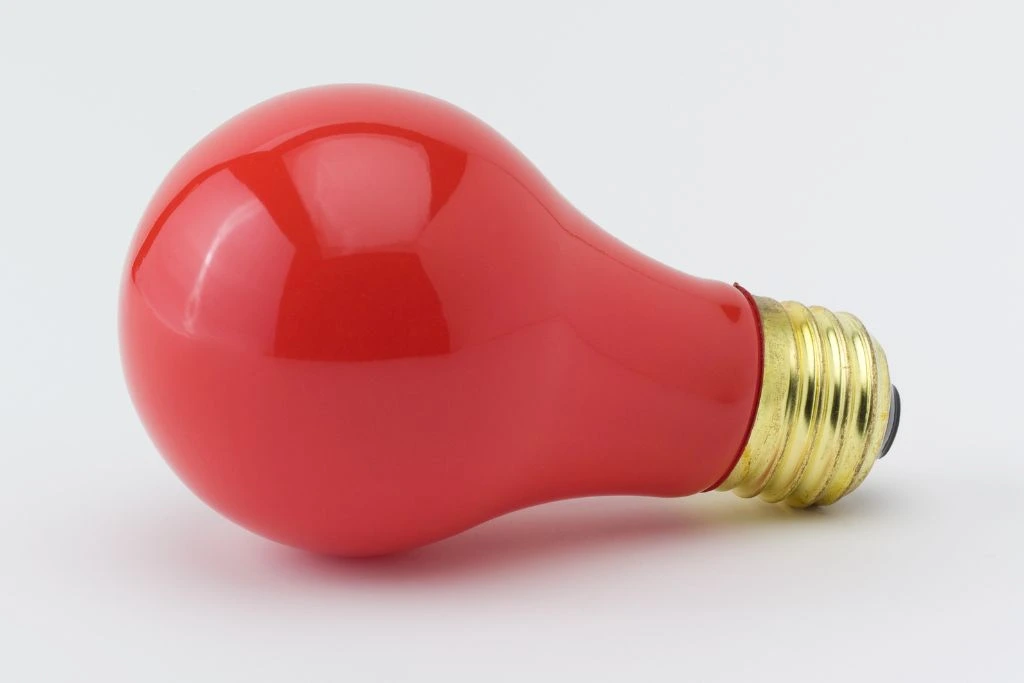
Leopard geckos are ectothermic, which means their environment influences their internal temperature. Due to this, you must give both a temperature gradient—a warmer and a cooler area inside the terrarium—and a relatively consistent temperature in their tank. When they need more heat, leopard geckos will bask in a hot spot, but they will move to the opposite area to cool off if they grow too hot.
Leopard geckos, like all reptiles, benefit from a temperature gradient in their terrarium.
- Basking surface temperature: 94-97°F (34-36°C)
- Hide temperature: 90-92°F (32-33°C)
- End temperature: 70-77°F (21-25°C)
Leopard geckos like to spend the daytime in warm hiding places to “charge” themselves for activity at night. To aid thermoregulation, a leopard gecko’s enclosure should contain at least two hideouts in various locations: one on the warmer end close to the heat source and another on the cool end.
Your leopard geckos can be heated in various ways:
Suitable Lights
Reptile lights in black or red provide heat and hidden lighting. They work best with heated pads and shouldn’t be utilized as the only heating source.
Ceramic Heaters
In their place, ceramic heaters are used. In contrast to bulbs, they do not produce any light. In all typical situations, they must be capable of heating.
Heating Pads
Simple heaters, called heating pads, are placed beneath the tank. They use little power and are affordable. They are positioned beneath one area of the tank, allowing you to establish a crucial temperature gradient.
Never use direct heating or heat pebbles since they could burn your gecko’s delicate, silky skin.
A thermometer must be used to check the temperature in both the hot and the cooler sections to ensure that the tank remains in a good range.
Leopard Gecko Tank Setup 5: Lighting
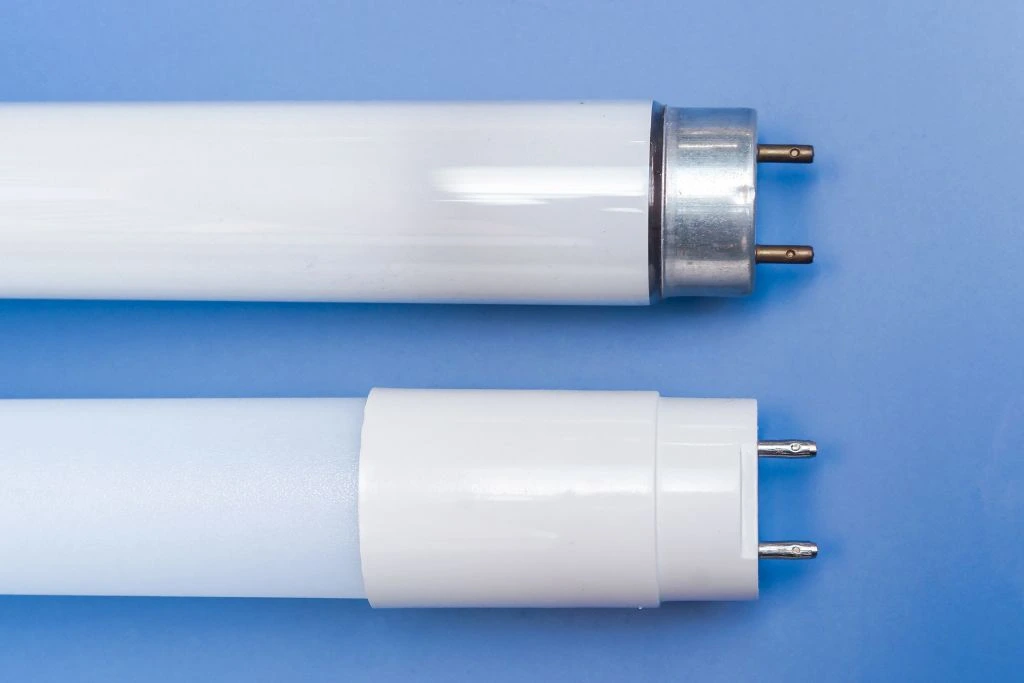
It’s a frequent misperception that UVB light is unnecessary for a leopard gecko’s lighting arrangement. They are solitary and primarily active at night, so people presume this.
Although leopard geckos are nocturnal, they require a light source during the day to simulate a cycle of day and night. The leopard gecko’s lighting system on a timer should provide ten hours of lighting and 14 hours of darkness. It will maintain their health and assist in controlling their circadian rhythm.
It has been demonstrated that UVB lighting enhances vitamin D and calcium absorption, lowering the likelihood of vitamin deficiency and metabolic bone diseases.
Place a T8 or T5 UVB fixture with a 6.0 to 10.0 bulb solely on a single end for your leopard gecko’s arrangement. A typical daytime basking bulb should be used with a UV light fixture.
Leopard Gecko Tank Setup 6: Decorations
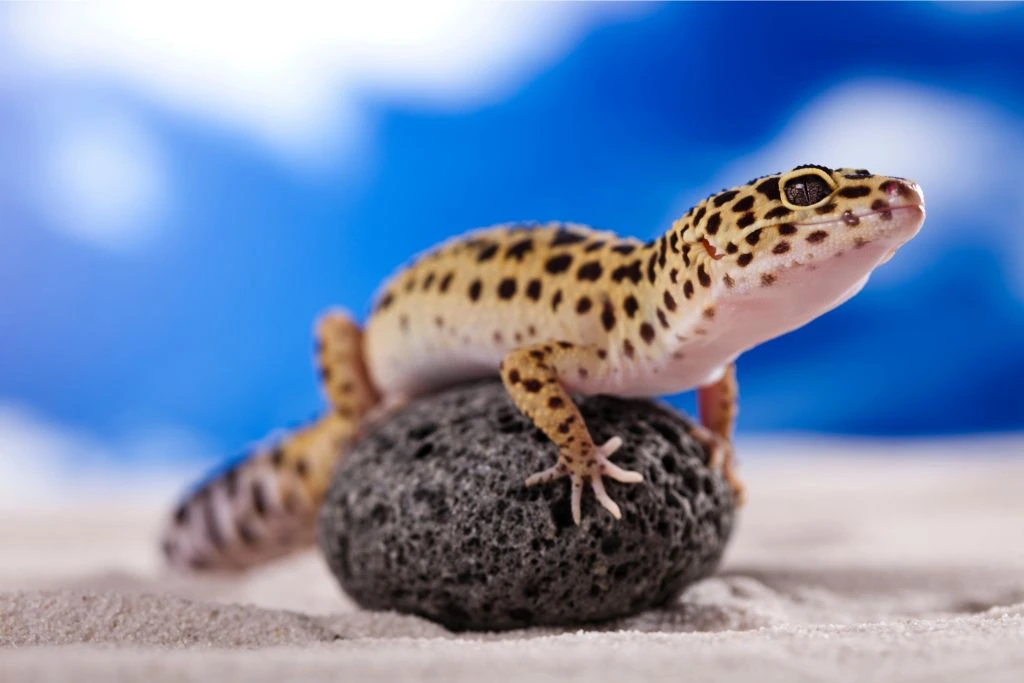
Leopard geckos require some tank decoration to add complexity and enrichment to their habitat. Incorporating decorations toward the tank is acceptable as long as enough room remains for them to move around. Not only will decor improve the aesthetic appeal, but it will also add a sort of stimulation to the mind and body.
Bogs and Rocks
Bogs and rocks are crucial components of the decor. You may arrange your leopard gecko’s home with rocks and wood, giving critters shelter and climbing areas. The only thing that matters is adhering to particular safety regulations.
Any rock constructions you build must be tightly fastened to other rocks or the terrarium’s walls. Silicone glue is a straightforward method.
Always choose softer rocks over harder ones. In contrast, nature only sometimes provides smooth rocks, and your gecko may find it challenging to scale entirely smooth rocks. It is better to use your judgment when determining what kind of rocks to place in your terrarium.
Conclusion
Among the most popular pet geckos worldwide is the leopard gecko. They are adored for their simple setup, maintenance, and amiable attitudes. These lizards are indigenous to the deserts of Southwest Asia and the Middle East in the wild. Many inhabit rocky cracks and caves.
Leopard geckos make good pets and don’t require a complicated setup. Every hour of every day, your leopard gecko will engage with his terrarium surroundings. A good setup is crucial for your gecko’s quality of life.
Also important to consider is the vivarium’s aesthetic appeal as a decorative addition to your leopard gecko’s home setup.

